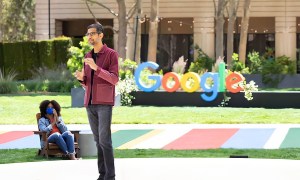
Now that the Google I/O keynote has wrapped up and all of the major announcements have been made, people can take time to process the news — and what news it was. This year has proven to be one of the most packed Google I/O conferences ever, with major updates coming to multiple facets of the Google experience.
Of course, it’s not over yet because the developer’s conference runs until May 20. There’s still the opportunity to check out the many other breakout sessions throughout the event, so make sure you know where and how to watch the live streams. However, if you missed out on day-one festivities, here are the best things announced at Google I/O 2021.
Android 12 is on the way with some huge changes

Google dropped the public beta for Android 12 and demonstrated some of the major changes coming to the totally redesigned platform. The Material You concept is an evolution of Google’s Material Design approach to aesthetics and apps. It blends multiple color options together to allow users to create a look for their Android device that is unique to them.
This is further expanded on through the Color Extraction technique. Imagine you have several widgets on your home screen, each with a background color and text, but then you set an image as your background.
Color Extraction pulls different colors from that image and uses A.I. to determine what colors look best with it, and then automatically adjusts the background and text color of your widgets and everything else on your home screen to create a one-of-a-kind look.
Google joined forces with Samsung for Wear

Google’s Wear OS platform originally launched to quite a bit of excitement but has grown somewhat stale in the intervening years with so few updates. Google changed all of that at Google I/O 2021 with the announcement that of joining Samsung to create a unified platform that merges the best features of Wear OS and Samsung’s Tizen into a single interface — simply shortened to Wear.
The health and fitness features of Wear OS will also receive an improvement in the coming months thanks to the integration of Fitbit into the platform. With broader developer support, Wear OS looked poised to become a force to be reckoned with.
Project Starline creates immersive video conferencing

Google’s new Project Starline is a concept that is currently only available in a select few Google offices. It combines a variety of sensors and cameras to create an immersive video conferencing experience that makes it feel like the other person is just an arm’s length away.
During the demonstration video, users reported that it was like they could reach out and touch the other person. Despite all the technology involved, it all seemed to fade into the background and left the focus on the conversation.
After the past year, when video conferencing played such a large role in communication, the ability to have a more intimate, one-on-one experience over distance will help bridge the inherent gap in video communications.
Google Photos updates and Cinematic Moments

Gone are the days when family photos are stored in an album and placed on a shelf. Today, people take thousands of pictures and store them all online in the cloud, or on a separate hard drive.
This results in huge numbers of memories that are all but forgotten, lost in a sea of photos that will rarely, if ever, be examined again. The new Google Photos updates and Cinematic Moments help remedy this by looking for similar shapes, colors, and periods in your photos and grouping them together.
The end result is that this helps users rediscover memories that might otherwise be lost. The update also includes improved search features to help find specific photographs when you have thousands stored.
Google I/O 2021 demonstrated many new features and updates to existing services that will help make Google even more of a powerhouse than it already is. Although some of the things we wanted to see weren’t announced, there’s still time for Google to drop some major announcements throughout the rest of the year.
New language and translation tools
One of the main obstacles facing smart technology is its ability to understand human speech. Computers interpret things in a very literal sense when everyday speech is anything but literal. Hyperbole and exaggeration are common parts of speech. How many times have you said “I’m starving!” when you were just a little bit hungry?
Through upgraded machine learning algorithms, Google’s search tools and Google Assistant can now better understand inputs, even if those inputs are not strictly literal. Users can point Google Lens at a math problem to see the answer, or at signs in foreign languages to receive a proper translation.
Aside from the obvious utility that better language understanding brings to the table, it also provides more accessibility to users with disabilities. One example of this is Android’s ability to live caption any video on their device in real-time. You don’t have to hear to understand what is said in the video.


